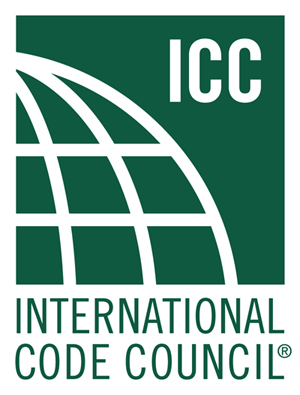Your cart is currently empty!
“Your Comprehensive Guide to the International Building Code”

The International Building Code (IBC) is a comprehensive set of regulations established to ensure the safety, health, and general welfare of the public by setting standards for the construction and occupancy of buildings. This guide provides an in-depth look into the origins, structure, and key components of the IBC, as well as practical advice for navigating compliance and addressing common challenges. Whether you are an architect, engineer, contractor, or building owner, understanding the IBC is essential for ensuring that buildings meet the necessary safety and performance standards.
Understanding the Origins of the IBC
The International Building Code (IBC) was developed by the International Code Council (ICC) to standardize building regulations across the United States and other parts of the world. The need for a unified building code arose from the patchwork of state and local codes that previously governed construction, which often led to inconsistencies and confusion. The ICC was formed in 1994 through the merger of three legacy organizations: Building Officials and Code Administrators International (BOCA), International Conference of Building Officials (ICBO), and Southern Building Code Congress International (SBCCI).
The first edition of the IBC was published in 2000, consolidating the best practices from the legacy codes into a single, comprehensive document. This new code aimed to streamline the building process, reduce redundancy, and provide a clear and consistent framework for construction standards. The IBC is updated every three years to incorporate new technologies, materials, and construction methods, as well as to address emerging safety concerns and lessons learned from past building failures.
The development of the IBC is a collaborative process involving input from a wide range of stakeholders, including architects, engineers, builders, code officials, and industry representatives. Public hearings and comment periods allow for broad participation and ensure that the code reflects current industry practices and scientific knowledge. This inclusive approach helps to create a code that is both practical and effective in promoting building safety and performance.
The IBC is widely adopted in the United States and has also been used as a model for building codes in other countries. Its influence extends beyond national borders, as many international projects and organizations reference the IBC to ensure consistency and quality in construction practices. The code’s comprehensive nature and regular updates make it a valuable resource for anyone involved in the building industry.
Understanding the origins of the IBC provides important context for its current structure and application. It highlights the code’s evolution from a fragmented system of local regulations to a unified standard that promotes safety, efficiency, and innovation in the construction industry. This historical perspective underscores the importance of the IBC as a living document that continues to adapt to the changing needs of the built environment.
To learn more about the origins and development of the IBC, visit IBC Manual.
Key Components and Structure of the IBC
The IBC is organized into several chapters, each addressing a specific aspect of building design and construction. The code begins with administrative provisions, including definitions, scope, and the duties and powers of building officials. These foundational elements set the stage for the more technical requirements that follow and ensure that all parties involved in the building process understand their roles and responsibilities.
One of the core components of the IBC is the section on building occupancy classifications. This section categorizes buildings based on their intended use, such as residential, commercial, industrial, or educational. Each occupancy classification has specific requirements for safety features, such as fire protection systems, egress routes, and accessibility, tailored to the risks associated with that type of occupancy.
Structural design requirements are another critical aspect of the IBC. These provisions ensure that buildings can withstand various loads and forces, such as gravity, wind, seismic activity, and snow. The code provides detailed guidelines for the design and construction of structural elements, including foundations, walls, floors, and roofs, to ensure the stability and integrity of the building.
Fire safety is a major focus of the IBC, with extensive provisions covering fire-resistance ratings, fire protection systems, and means of egress. These requirements are designed to prevent the spread of fire, protect occupants, and facilitate safe evacuation in the event of an emergency. The IBC also addresses the installation and maintenance of fire detection and suppression systems, such as sprinklers and alarms.
Accessibility is another key component of the IBC, reflecting the importance of creating buildings that are usable by all people, regardless of their physical abilities. The code includes requirements for accessible routes, entrances, restrooms, and other features to ensure that buildings are inclusive and comply with the Americans with Disabilities Act (ADA) standards. These provisions help to create environments that are safe and accessible for everyone.
Energy efficiency and sustainability are increasingly important considerations in building design, and the IBC includes provisions to address these issues. The code sets standards for building envelope performance, mechanical systems, lighting, and other factors that impact energy use. By promoting energy-efficient design and construction practices, the IBC helps to reduce the environmental impact of buildings and support long-term sustainability goals.
For a detailed breakdown of the key components and structure of the IBC, visit IBC Manual.
Navigating the IBC for Compliance
Navigating the IBC to ensure compliance can be a complex task, but understanding its structure and key components can make the process more manageable. The first step is to familiarize yourself with the administrative provisions of the code, which outline the scope, definitions, and general requirements. This foundational knowledge will help you understand the context and application of the specific technical requirements.
One of the most important aspects of IBC compliance is determining the correct occupancy classification for your building. This classification affects many other requirements, such as fire protection, egress routes, and accessibility. Carefully review the definitions and criteria for each occupancy type to ensure that your building is properly categorized. Misclassifying a building can lead to significant compliance issues and potential safety risks.
Once you have determined the occupancy classification, you can begin to address the specific requirements for that type of building. This includes structural design, fire safety, accessibility, and energy efficiency, among other factors. It is important to review the relevant sections of the IBC in detail and consult with experts, such as architects, engineers, and code officials, to ensure that your building meets all applicable standards.
Documentation and record-keeping are essential components of the compliance process. Maintain detailed records of your design and construction plans, as well as any inspections, tests, and approvals. This documentation will be crucial if you need to demonstrate compliance to building officials or address any issues that arise during construction or occupancy. Make sure that all records are accurate, complete, and readily accessible.
Regular communication with local building officials is another key to successful IBC compliance. These officials are responsible for enforcing the code and can provide valuable guidance and support throughout the building process. Schedule regular meetings and inspections to review your plans and progress, and be proactive in addressing any questions or concerns that arise. Building a positive relationship with code officials can help to streamline the compliance process and prevent potential issues.
Finally, stay informed about updates and changes to the IBC. The code is updated every three years, and new editions may include revisions that impact your building project. Subscribe to industry publications, attend relevant conferences and training sessions, and participate in public comment periods to stay current with the latest developments. By staying informed and proactive, you can ensure that your building remains compliant with the most up-to-date standards.
For more information on navigating the IBC for compliance, visit IBC Manual.
Common Challenges and Solutions in the IBC
One of the most common challenges in navigating the IBC is interpreting the code’s technical language and requirements. The IBC is a highly detailed and complex document, and understanding its provisions can be daunting for those who are not familiar with building codes. To address this challenge, consider seeking assistance from professionals such as code consultants, architects, or engineers who have experience with the IBC. These experts can help you interpret the code’s requirements and apply them to your specific project.
Another challenge is ensuring that all stakeholders are on the same page regarding IBC compliance. Construction projects often involve multiple parties, including architects, engineers, contractors, and building owners, each with their own responsibilities and expertise. Effective communication and collaboration are essential to ensure that everyone understands the code’s requirements and their role in achieving compliance. Regular meetings, clear documentation, and shared project management tools can help to facilitate this process.
Fire safety requirements are a critical aspect of the IBC, and ensuring compliance in this area can be particularly challenging. The code includes detailed provisions for fire-resistance ratings, fire protection systems, and means of egress, which must be carefully integrated into the building design. To address these challenges, work closely with fire protection engineers and code officials to develop a comprehensive fire safety plan. Conduct regular inspections and tests to ensure that all fire safety systems are properly installed and maintained.
Accessibility is another area where compliance challenges often arise. The IBC includes specific requirements for accessible routes, entrances, restrooms, and other features to ensure that buildings are usable by people with disabilities. Ensuring compliance with these provisions requires careful planning and attention to detail. Engage with accessibility consultants and review the ADA standards alongside the IBC requirements to ensure that your building meets all necessary criteria.
Energy efficiency and sustainability are increasingly important considerations in building design, and the IBC includes provisions to address these issues. However, achieving compliance with these requirements can be challenging, particularly for older buildings or those in extreme climates. To address these challenges, consider conducting an energy audit to identify areas for improvement and develop a plan to enhance the building’s energy performance. Utilize energy-efficient materials and technologies, and seek guidance from energy consultants to ensure that your building meets the IBC’s energy efficiency standards.
Finally, staying up-to-date with changes to the IBC is a common challenge for many building professionals. The code is updated every three years, and new editions may include revisions that impact your building project. To stay informed, subscribe to industry publications, attend relevant conferences and training sessions, and participate in
